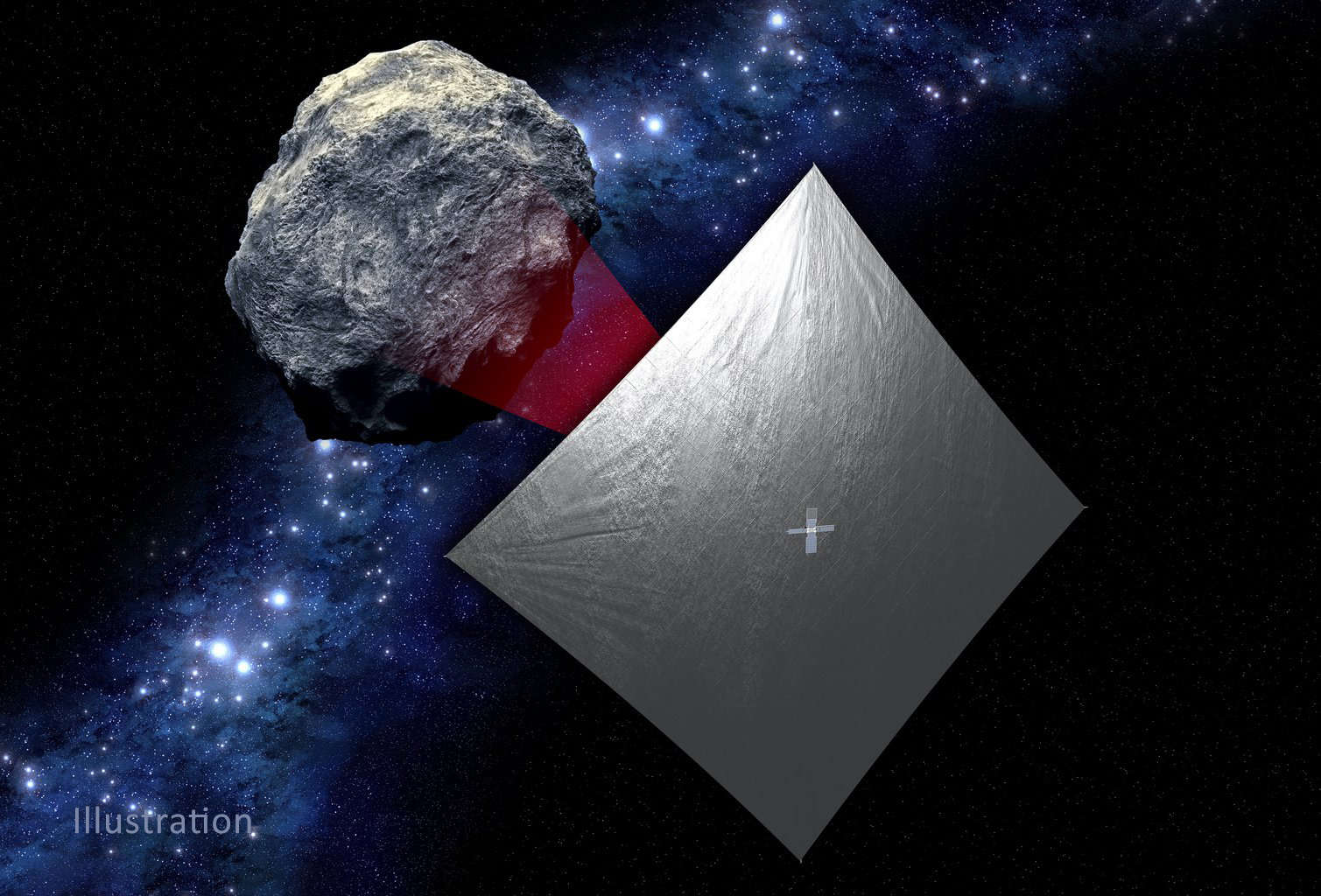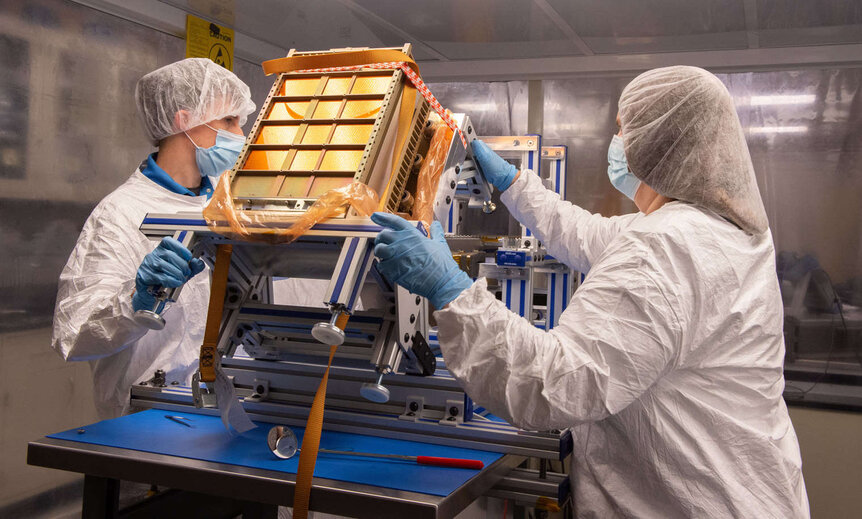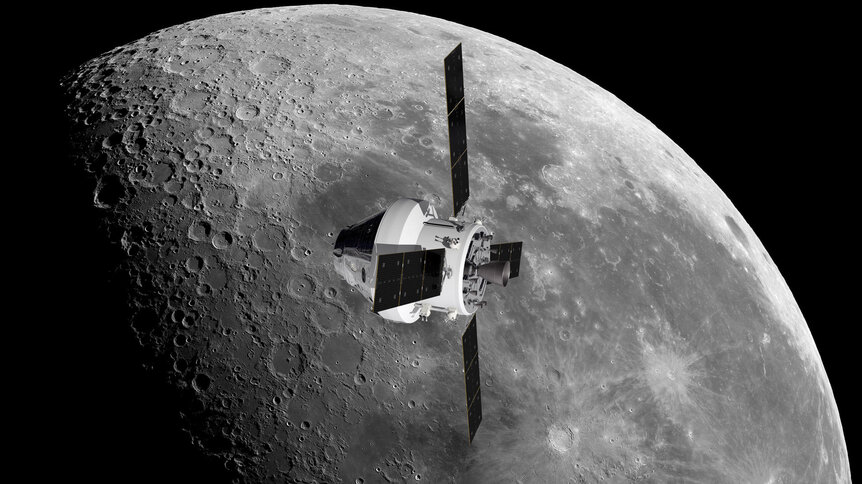Create a free profile to get unlimited access to exclusive videos, sweepstakes, and more!
Fly me to the Moon… and then a near-Earth asteroid

Well this is interesting: NASA is launching a spacecraft to explore asteroids on Artemis I, the first test flight in their push to return to the Moon.
The spacecraft is called Near-Earth Asteroid, or NEA Scout, and get this: It’s using a solar sail as propulsion!*
OK, first: Artemis I is a full-up test flight of the Space Launch System (or SLS) and Orion capsule. It will be uncrewed, and will send Orion into orbit around the Moon for a week or so before it comes back to Earth. It’s scheduled to launch this November, but we’ll see; I am NOT a fan of SLS and given the large number of delays, I doubt it will get off the ground this year. But it’s likely to launch next year if not this one.
Orion is mounted to the top of the rocket using an adapter ring, and there are 13 smaller missions that will be mounted inside and deployed from the ring, including NEA Scout.
Scout is a CubeSat, a tiny spacecraft. CubeSats are standardized boxes 10 centimeters (!!) on a side, small enough to fit in the palm of your hand. They can also be put together to make a larger configuration; Scout is six of them in a flat rectangular prism measuring 10 x 20 x 30 cm, more or less the size of a big shoebox.
Don’t let the size fool you. It uses four telescoping aluminum rods that will extend to 6.8 meters long (the height of a two-story house), which will unfurl a solar sail made of a kind of fancy plastic (aluminized polyimide) that is extremely lightweight because it’s only a stunning 2.5 microns thick. For comparison, a typical human hair is 100 microns thick. So, wow.
Once deployed, the sail will use sunlight as propulsion. Although photons have no mass, they do have momentum, so when they hit the sail they give it a kick. This is why the sail is so thin but large (85 square meters) and the spacecraft small and lightweight; the lower the mass the higher the acceleration. Although the acceleration is incredibly low, it’s continuous. That adds up, so while you don’t move fast initially, you can build up quite the velocity over weeks and months.
The asteroid target is not set yet, because the launch date isn’t secure and everything in space moves. After launch it will be placed into orbit around the Sun (what’s called a heliocentric orbit). After that, Scout will use a cold gas thruster to position itself, unfurl the sail, and then away it goes.
Solar sails have been tested in orbit before and they work! In fact, when The Planetary Society tested their solar sail, I wrote about how all this works, so go read that article for more on photon momentum, sails, and CubeSats.
The plan is for Scout to match velocities with a 100-meter size asteroid, with the goal of getting images with resolution of 10 to 50 centimeters. We’ve never seen asteroids this small up close, but they’re big enough to do a lot of damage should they impact our planet. Knowing more about them is important! They’re likely to be rubble piles — like Bennu and Ryugu, which are 500 and 900 meters in size — which means a jumble of very fragile rocks held together by their own gravity. Deflecting such an asteroid is complicated and we need to understand them better in case we ever do need to push one out of the way.
The other dozen secondary spacecraft to be launched on Artemis I look pretty interesting too. Several will go into orbit around the Moon; two will look for water ice in deep, dark craters, while another will map hydrogen (which, really, is also to look for water ice). The Japanese Space Agency JAXA also will have a lander on board to measure radiation on the lunar surface — a good idea since people will one day live there.
As for the primary mission to the Moon, if all goes according to plan, Artemis I will pave the way for the sequel, Artemis II, a crewed mission that will perform a flyby of the Moon on what’s called a free return trajectory, meaning they’ll dip low enough over the lunar surface (roughly 7,500 km) such that the Moon’s gravity will send them back to Earth without them having to do an engine burn — that way, if anything goes wrong they’ll at least make it back home. They’ll go into a high orbit around our planet, then drop back to Earth to touch down in the Pacific Ocean. The nominal mission timeline is 10 days, and is scheduled for launch in June 2023 (though again, we’ll see).
This is all pretty ambitious, though of course achievable or NASA wouldn’t have gone ahead with these missions. The overall design of the Artemis project to return to the Moon has changed several times, and the initial deadline of 2024 to put human boots on the surface was both arbitrary and dangerous, and clearly made for political purposes. This made the architecture of the project — the hardware needed to safely put people on the Moon and return them — difficult to pin down, especially with SLS never having flown and with Congress controlling the budget. To be honest that architecture still isn’t nailed down, with contracts still being made. I find that a tad worrisome given this is supposed to be a sustainable mission. Something like that cannot, must not be rushed.
So again, we’ll see. As it stands the science aspects of this mission at least look pretty cool, so I’m looking forward to those, especially getting to see a football-field-sized asteroid up close. That will be amazing.
Correction (August 30, 2021): I originally wrote that this would be the first interplanetary mission using a solar sail, but that's not correct; I totally forgot about IKAROS. This was a Japanese mission in 2010 which used a solar sail to fly past Venus, and performed beautifully. So it was the first sail used in interplanetary space! My apologies for the error.

















